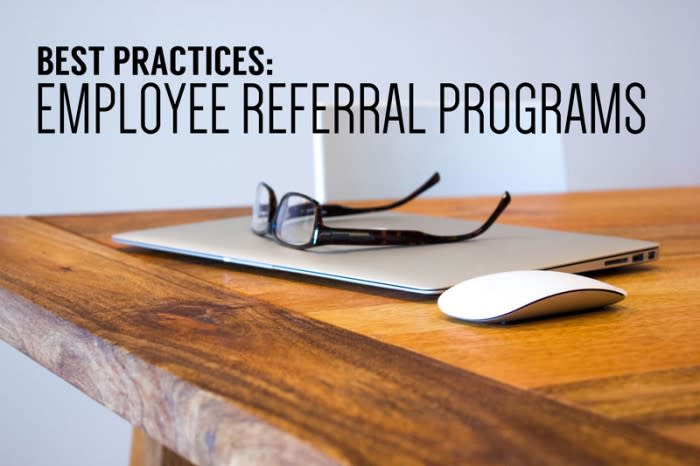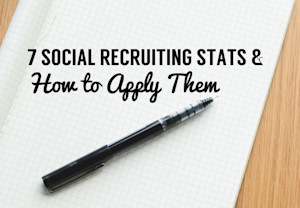
7 Best Practices for Employee Referral Programs
Referrals are the number one source of quality hires. They significantly improve time to hire, and referred candidates consistently outperform candidates hired through other channels.
Here are seven best practices for creating a referral program that works:
Build a Solid Infrastructure
Your referral program needs a solid structure to build upon.
“By launching an effective ERP, Vistaprint increased referrals from 19 percent to 42 percent of its total hires in one year.”
Source: Wall Street Journal MarketWatch
Before you start asking employees to go out and spread the word about your jobs, you must have a plan.
Assess your recruitment needs to help you set goals.
Make sure that you understand your team, so that you can tailor the program to fit your staff culture.
Put standardized policies in place to ensure that the company is well represented.
Address the need for tracking your referral process, so that you can measure success and reward successful referrals.
Create a manual that lays out your recruitment goals and explains the referral process to your team.
Having a sturdy foundation will mean significantly fewer problems down the road, increased efficiency, and better results overall.
Prioritize
Focus your efforts on hard to fill positions, and finding top talent.
“On average, it takes just 10.4 referrals to lead to a hire.” – Click to Tweet Source: John Zappe, ERE.net
Referral programs are one of the best tools you have for accessing passive candidates and higher quality talent. Make this kind of hire the priority by communicating this to your team, and even offering bonus rewards for those who successfully refer for especially hard to fill job openings.
Create Candidate Profiles
Your team do not necessarily know what makes for a good referral. This can lead to employees referring friends based on how much their friend needs a job, instead of how right their friend is for the job.
So, show them exactly what you’re looking for in a great hire
Draw up a profile of an ideal candidate. Focus on soft skills, such as drive, problem solving, and teamwork skills, but also, clearly state education, training, and experience minimums.
Have your employees ask themselves:
Would I want to work on a project with this person?
How well will they fit in at our company?
What skill gaps might they be able to fill
for
our team?
Remove Friction
Make it as easy as possible for candidates to make referrals. That means providing email templates, education, and elevator pitches.
You can even use apps to help automate the referral process for your employees.
Have a Social Strategy
Your employees have an average of 150 connections through their social media. Many of these connections are past colleagues and schoolmates, which are ideal for referrals!
… but, your employees may not have these contacts’ phone numbers, or even interact with them in real life. So, to reach these potential candidates, you must encourage your team to make referrals via social networks.
Teach your employees about social media best practices, explain the value of reaching out through social networks, and then make it easy for your team to make referrals with Facebook, Twitter, and LinkedIn.
Make it Part of Your Culture
“46% of all hires at top performing firms are referrals.” – Click to Tweet Source: John Sullivan
Explain to all of your employees the value of employee referrals.
Tell them about how using referrals as a core part of the company’s recruitment process will directly benefit their happiness at work, because it means hiring people who will fit the team dynamic.
Everyone wants to work with people that they get along with!
Encourage open dialogue by openly celebrating successful referrals, and making a point of commenting on how much you appreciate your team’s efforts.
Reward Accordingly
If you have made referrals a positive part of your company’s culture, then your employees will be happy to help, but you should still reward them for doing so.
Most of the referrals they make will be outside of office hours, and they should be compensated for taking the time and effort to help you recruit qualified candidates
“Referral hires are 69 percent higher when companies offer a reward.” – Click to Tweet
Vary your rewards depending on the situation.
For example, give a $10 gift card for a good lead. Give a day off, or a larger gift certificate, for referrals that result in interviews. Give monetary compensation for successful hires.
You can even add bonus rewards for especially hard to fill positions.
Get as creative as you like, so long as the reward system is consistent, enticing, and always, always, includes a thank-you!
Referrals are the fastest and most effective way to hire. With these best practices, before you know it, you’ll be swimming in qualified candidates.





